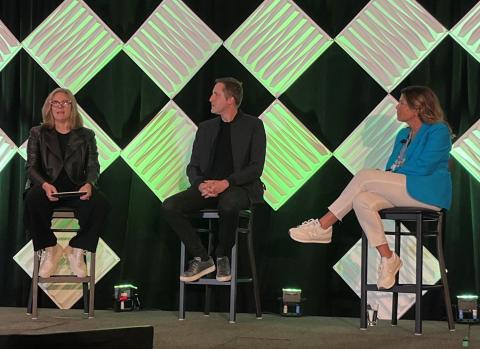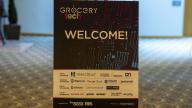Finding the Horizon of Seamless Food Retailing

When it comes to the optimal shopper journey in store and online, one of the most frequent descriptors is “seamless.” Indeed, that word came up repeatedly during an engaging discussion on the second day of the GroceryTech event (July 12-July 14) in Cincinnati.
During a session on “Creating Next Gen Customer Experiences,” the panelists emphasized the importance of connecting points in the shopper’s journey in a way that feels intuitive and holistic. “The perfect experience blends the online and in-store experience. We believe in a five-year horizon – it will be one single mode that works really well together. Then you peel back the layers, and it is a seamless experience – it’s frictionless,” panelist David McIntosh, VP and general manager of connected stores at Instacart, told attendees.
[Read more: "GroceryTech Opens With Informative Workshop"]
Fellow panelist Jody Kalmbach, group VP, product experience for The Kroger Co., highlighted the nuances of today’s fused marketplaces. “Omnichannel is by definition bringing multiple channels together so customers can shop online and in store. It is very functional and utilitarian. Seamless is about how you make customers feel – you deliver experiences in their terms and remove friction,” she explained.
Pam Dillon, CEO and co-founder of the adult beverage recommendation platform Preferabli and moderator for the session, cited the Walt Disney Co. as an example of an organization that provides such a consistent experience across different aspects of its business. “Creating feeling at scale sounds like a heady thing to do, but it turns out that there is a 40- to 50-year experience of doing that,” she noted.
There are many inventive ways to get to the point of seamless food retailing, according to the panelists. McIntosh, for example, pointed out that Instacart has amplified its own innovations with mergers and acquisitions. “We have a connected store product suite – we bought Caper Cart, we bought the FoodStorm order management system, we bought Eversight and we bought the Rosie e-comm platform for independents,” he reported.
The Caper Cart represents a key aspect of the seamless shopping experience. “The Caper Cart is an AI-powered smart cart that recognizes items you can check out directly from the cart. The second element of the cart that is equally powerful is the screen that is in front of the customers, which is an opportunity to captivate them for the 40 or 45 minutes that they are spending at the store. With that screen, you can start to integrate personalization,” said McIntosh. The smart shopping cart includes other relevant features for today’s consumers, he added, such as the capability to display a running total so people can stay close to their budget.
Leveraging data can also result in seamless retailing. “It has to start with data. We are now at a point where we are passing a trillion personalization recommendations annually. It’s pervasive to who we are as a company and it starts to influence what you build, how you build it and how you stick with that continuous optimization approach,’ said Kalbach of Kroger’s assimilation of data and use of algorithms.
[Read more: "2023 Grocery Tech Trends Study"]
AI has been and will be central to the frictionless journey for consumers and retailers’ own infrastructures. McIntosh pointed to the new “Ask Instacart” feature that taps into OpenAI’s large language models and the company’s custom AI models and then leverages the billion or so entries in Instacart's catalog developed with its retail partners. “Somebody could say, 'Hey, I want a meal plan for a family of five with this specific budget’ and they could either shop online or come to the store and sync their list to the Caper Cart, get navigated to the things on shelf and go to the shelf tag that is lit up. That’s where I think it is going, where it becomes a frictionless way to build a basket and then you can take that basket and shop it seamlessly across these different modalities,” he remarked.
Kalmbach said that AI is pivotal internally as well. “One thing I’d love to call out is thinking about the associate experience side of it. We want to make sure we are having our associates use their most effective skills, so you start to bifurcate having AI-driven solutions to manage certain tasks, help predict what the most important next task is and start feeding that into your ecosystem. When you think about experience, then, you are bringing up the associates to engage with customers,” she said.
As the panelists weighed in on other elements of the tech-enabled seamless customer journey, Dillon said that integration and intersectionality are increasingly closer. “As I'm reflecting now in the context of this discussion, I think all roads have sort of all come together. You know, neither one is more or less important,” she observed.
The inaugural GroceryTech event, presented by Progressive Grocer and RIS News, was created to bring together the combined community of business and technology grocery executives on their own journey to modernize their technology infrastructure and support innovation.
This article originally appeared on Progressive Grocer, a sister publication of RIS News.



